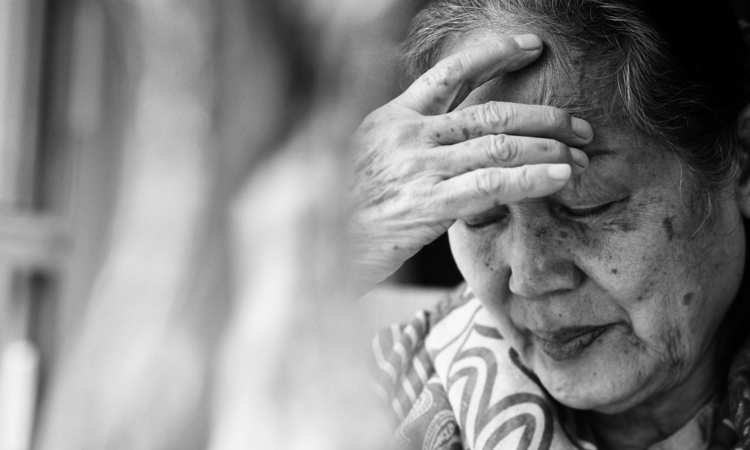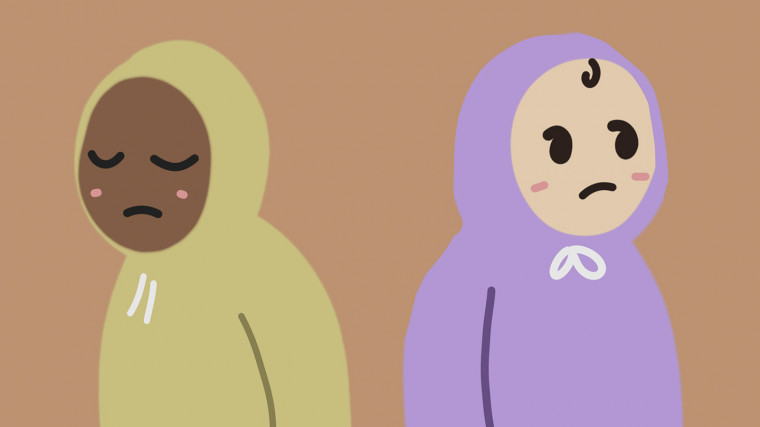Let’s talk about the unspeakable.
We are hearing more stories of self-harm and suicide, yet we are having the wrong conversations about it. In September alone, we have had breathless accounts of celebrity suicides of actresses like Oh In-Hye, Sei Ashina or Yuko Takeuchi. Earlier this year, a migrant worker who tested positive for Covid-19 fell to his death at Khoo Teck Puat Hospital.
Often, our conversations around suicide reflect a similar macabre fascination we have about a particularly gruesome car crash. We stop and we stare, then we move off, temporarily disconcerted before resuming life as per normal.
We need more constructive conversations on such a real problem facing our society, especially when it is increasingly affecting our young people.
Suicide has been described as an irreversible solution to an often temporary problem.
“It’s not the life they want to end. It’s about the suffering; they just don’t want the suffering to continue,” mental health advocate Jonathan Kuek tells The Pride.
When someone is suicidal, they are unable to see outside of their desperate situation. Wanting their suffering to end yet feeling trapped by circumstances, they may believe that taking their own life is the only option left.
Samaritans of Singapore’s chief executive Gasper Tan explains that this tunnel vision makes suicidal individuals feel empty and alone.
“The perception that no one is around as a pillar of support can amplify the feelings of despair.”
Who’s affected
In theory, there are certain risk factors that can determine how likely someone would choose to end their lives. Factors ranging from social economic status to mental health conditions can indicate the likelihood of suicidal behaviour.
However, many researchers agree that it is almost impossible to tell who is truly at risk. Jonathan says: “In a real-world setting, I doubt anyone would be able to confidently say who will be most likely to attempt to end their lives via suicide.”
In 2019, 400 people killed themselves in Singapore. If you think that number isn’t much, try telling that to the 400 families left behind. More worryingly, the number of calls to helplines have increased. Suicide remains the leading cause of death among our youths aged 10 to 29.
Not just in Singapore, but across the world, suicide rates have increased as Covid-19 has caused people to worry about their livelihoods.
But why don’t we talk?
In his advocacy, Jonathan has seen people ending their lives over tough life events such as relationship woes, work stress or money issues. These problems, although common, can have dire consequences if not talked about. But once these feelings are shared, he says, very often these issues can be resolved.
So why do many people choose to remain silent? Gasper tells The Pride that it boils down to fear – of judgement and of being seen as weak. “The stigma and silence attached to suicide creates fear and inhibits people from speaking out,” he says.
People sometimes label suicide as a selfish choice, but that’s the wrong approach. This could contribute to the suicidal person’s belief that they are a burden to those around them, which increases their fear and isolation.
In many cases, Jonathan says, suicidal people have genuinely tried to voice out their issues, but were rejected or ignored. Hence, some create a facade, pretending to be well even when they harbour suicidal thoughts. Sometimes, they even end up believing the pretence, which discourages them from seeking help early.

Turning good intentions into good actions
But Gasper believes that most of a suicidal person’s loved ones have good intentions, even though their actions may not reflect that. “While the topic of suicide may cause others to be startled initially, more often than not they will still want to help,” he says.
He explains that the stigma surrounding suicide can be removed only when we address it openly.
For such conversations to be normalised, Jonathan says, we need more proactive measures: Don’t just list the distress signs; teach people to be better listeners.
Decriminalising attempted suicide is a good first step, as authorities can now focus on getting help to those struggling with suicidal feelings. But more needs to be done.
“We need a cultural shift,” Jonathan says, referring to the need to further untangle the misconceptions surrounding suicide.
A cry for attention or a cry for help?
While suicidal feelings can be a symptom of an underlying mental health issue, it can also simply be part of a human life experience.
Let’s not be too quick to conclude that all those who are suicidal have a mental health condition. To do so would be to disregard their individual struggles.
Gasper raises another common mistake about people who attempt suicide. “There is a misconception that people who talk about suicide or attempt suicide are just seeking attention and will not go through with the act,” he says.
However, it should never be brushed aside.
This is because an attempt to take one’s own life is usually a call for help instead of a desire for attention. Often, it is the only way they think they can express their distress after all other methods have seemed to fail. “What they need is not attention but genuine care and support,” says Jonathan.
Both Gasper and Jonathan say that it is essential that all mentions of suicide or suicide attempts should be treated seriously and not as a form of attention-seeking. If someone is threatening suicide, get help immediately.
Another common misconception about suicide is that talking about it encourages it. Jonathan elaborates on this, saying that media may play up suicide stories, especially of celebrities, to grab more eyeballs. If it’s left to stand on its own, without proper context, this sensationalism can be dangerous when someone wrongfully identifies with the message.
We should talk about suicide in a safe zone, opening doors for communication between suicidal individuals and the people around them. Done right, it can be a relief for those contemplating suicide to feel safe in sharing their struggles.

Be approachable
“We need to create a psychologically safe environment, and demonstrate that there is care being shown to them on a regular basis,” Jonathan explains. From his observations, most of the time, struggling individuals just need a listening ear. “Sometimes, you don’t even need to provide a solution.”
Jokes about suicide can be a double-edged sword. It could be a coping mechanism or a cry for help. But don’t immediately jump to conclusions. “A passing joke is usually not an issue,” Jonathan says. Poking fun at stressful events has proven to relax people and build rapport.
If you hear a friend joke about suicide and you feel something is off, the best thing to do is to outright ask him how serious he is. Even if he brushes it off, it can set the stage for a more genuine conversation about deeper issues in the future.
“Trust your instincts, if you notice that there may be something amiss, do reach out and check in. It is always better to make a supportive attempt than none at all,” Gasper says.
Other stories you might like






Be genuine
But beware sounding too glib or just paying lip service. Gasper says that it all boils down to body language and word choice. “Personal anecdotes and overused phrases like ‘things will get better’ and ‘if I can do it, you can too’ may seem like harmless encouragement, but they actually disregard and invalidate the feelings of the individual in crisis.”
He recommends listening attentively and acknowledging the struggles they are going through. As people fear being judged, refrain from imposing your own advice or judgement. Aim to understand their struggles, and be comfortable in not providing any solutions.
If you suspect someone to be harbouring suicidal thoughts, check in with them and explain why you’re worried about them. It is best to reach out to them privately, Gasper says, with a simple “how are you?” to know you care. “Your ability to notice the small details may signal to the individual that you are genuinely concerned.”
Be understanding
Even those who want to talk about suicide the right way need to be wary of getting on their high horse.
“We need to stop virtue signalling on what is the right way to talk about suicide,” Jonathan says. By reprimanding those who joke about suicide or brushing off those who think suicidal people are merely attention-seekers, we may end up creating a politically-correct zone of empty platitudes instead of encouraging meaningful discourse.
“This is a misguided way of talking about sensitive issues. We need to have more perspectives and not hold on to a single one.”
He encourages embracing the diversity of worldviews when discussing suicide. It is important to understand those who see suicide in a different way before coming to a unifying narrative. “That’s when we start to have real, uncomfortable, potentially impactful discussions around mental health and mental illness.”
Be self-aware
Of course, as any long-term caregiver knows, there is a cost to providing support to others.
Jonathan highlights the importance of removing yourself from the situation from time to time to restore emotional capacity. This could come in many forms; be it surrounding yourself with friends who are in a better space in their lives or engaging in positive self-talk. Constantly reminding yourself that you are not obligated to save someone and you are simply holding a safe mental space for them to retreat to can help regulate your emotional health too.
“It’s also about being very clear about your emotional and psychological boundaries,” Jonathan adds.
Ultimately, providing informal caregiving and social support should be temporary. Seeking formal professional support can help with their issues from a more holistic perspective.
“And most importantly,” Jonathan concludes, “If anything goes wrong, you need to know that it’s not your fault and you’ve done all that you can. Someone you’re supporting choosing to end their life, as painful as it is, is really not a commentary or indictment on you as a person or your abilities to support others.”
If you are feeling distressed, or know someone who is feeling suicidal, get help immediately. Talk to somebody. Here are some helplines:
- National Care Hotline: 1800 202 6868 (8am-8pm daily)
- Samaritans of Singapore: 1-767 (24 hours)
- Institute of Mental Health: 6389 2222 (24 hours)
- Silver Ribbon Singapore: 6386 1928, 6509 0271, 6385 3714 (Mon – Fri: 9am – 5pm, excluding Public Holidays)
- Tinkle Friends (for children): 1800 2744 788 (Mon – Fri: 2.30pm to 5.00pm)
- TOUCHline (Counselling): 1800 377 2252
If you like what you read, follow us on Twitter and Google News to get the latest updates.


